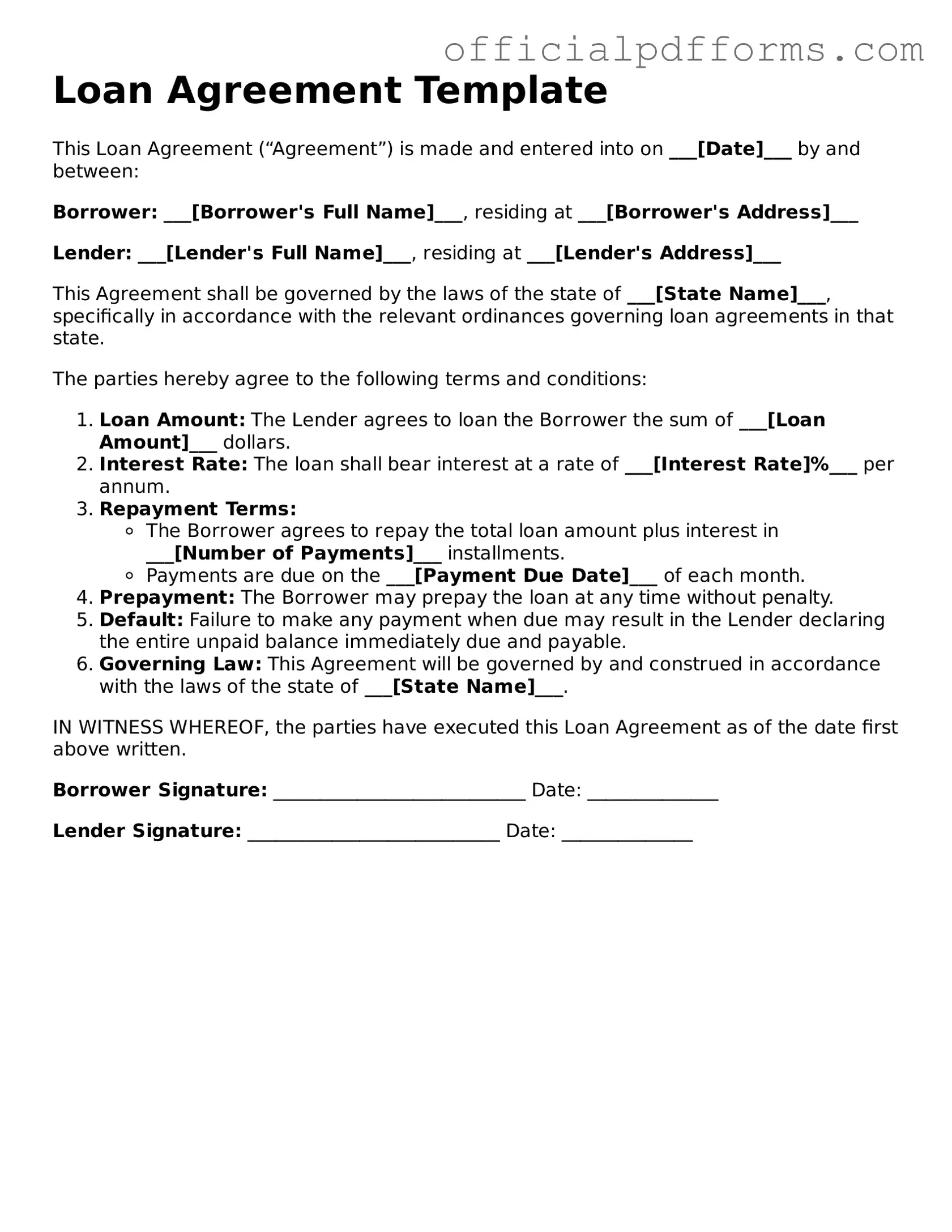A Loan Agreement form is a legal document that outlines the terms and conditions under which a borrower agrees to receive funds from a lender. This form typically includes details such as the loan amount, interest rate, repayment schedule, and any collateral required. It serves to protect both parties by clearly defining their rights and obligations throughout the loan period.
When completing the Loan Agreement form, you will need to provide several key pieces of information, including:
-
Your full name and contact information.
-
The lender's name and contact details.
-
The total amount of the loan being requested.
-
The interest rate and any applicable fees.
-
The repayment schedule, including due dates and payment amounts.
-
Any collateral offered to secure the loan.
Providing accurate and complete information is crucial, as it helps ensure that the agreement is valid and enforceable.
What happens if I cannot repay the loan on time?
If you find yourself unable to repay the loan on time, it is important to communicate with your lender as soon as possible. Many lenders are willing to work with borrowers who face financial difficulties. Possible options may include:
-
Requesting a loan extension or modification.
-
Negotiating a new repayment plan that is more manageable.
-
Exploring the possibility of partial payments until your situation improves.
Ignoring the issue can lead to additional fees, damage to your credit score, or even legal action. Open communication is key to finding a solution that works for both parties.
Can I make changes to the Loan Agreement after it has been signed?
Once a Loan Agreement has been signed, making changes can be challenging. However, amendments are possible if both the borrower and lender agree to the changes. To formally amend the agreement:
-
Both parties should discuss the desired changes.
-
Draft a written amendment that clearly outlines the modifications.
-
Ensure both parties sign the amendment to make it legally binding.
It is advisable to keep a copy of the original agreement along with any amendments for your records. This helps maintain clarity about the terms of the loan.
